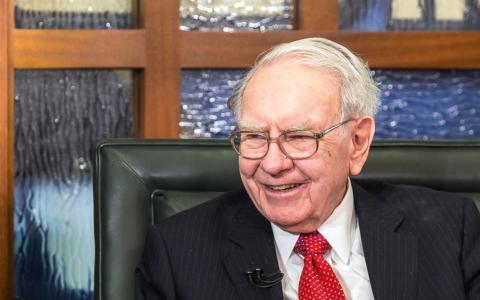
Warren Buffett remains unfazed by the market signals suggesting that interest rates might decline in the near future.
As the CEO of Berkshire Hathaway, Buffett continues to maintain a minimal bondholding strategy at the company, a significant departure from the typical approach of property and casualty insurers who usually allocate the majority of their portfolios to fixed-income securities.
Berkshire, a sprawling conglomerate that owns the world’s largest insurance company—including Geico and a major reinsurance operation—has positioned itself differently under Buffett’s guidance.
Buffett has a clear preference for cash—particularly U.S. Treasury bills—and stocks, despite scaling back Berkshire’s substantial equity holdings. Recent estimates suggest Berkshire has sold approximately $85 billion worth of Apple stock this year.
Unlike many bond experts who have been advising investors to lock in longer-term yields during 2024, anticipating a drop in short-term rates, Buffett seems unconcerned. These experts predict short-term bond yields, which currently hover above 5%, could decline to around 4% by 2025. As a reminder, bond yields and prices move inversely.
Berkshire’s recent 10-Q report reveals that the company held just $16 billion in bonds at the end of the second quarter, a stark contrast to its $271 billion in cash and $285 billion in stocks. This bond allocation is a decrease from the $23 billion held at the end of 2023, with most of it in cash-like instruments, including $11 billion maturing within the year.
A significant portion of these bond holdings are in foreign government securities, possibly due to regulatory requirements for some of Berkshire’s international insurance operations.
Buffett’s aversion to bonds is well-documented. He favors equities for their capital appreciation potential and cash, particularly U.S. Treasury bills, which are virtually risk-free and mature within a year. As of June 30, Berkshire held $235 billion in T-bills.
Buffett has shown a willingness to hold cash even when short-term rates were near zero in 2020 and 2021. Berkshire has reaped the rewards as these rates have climbed above 5%, now generating over $10 billion annually from its cash reserves.
In 2020, Buffett was openly critical of bond investments, questioning the rationale of purchasing 10-year Treasuries yielding less than 1%. He also criticized banks for buying vast amounts of mortgage securities at 2% during 2020 and 2021, investments that are now showing significant paper losses.
Most insurers allocate the majority of their investments to bonds due to regulatory requirements, safety, and the lower price volatility compared to stocks. For instance, Chubb, in which Berkshire owns a 6% stake, holds about 80% of its investments in bonds. Other insurers tend to allocate closer to 90%.
However, Berkshire’s insurance operations are so overcapitalized that the company doesn’t face the same regulatory pressures. While most insurers generate annual premiums equal to two to three times their capital, Berkshire’s annual insurance premiums are only about 30% of its massive $300 billion capital.
Berkshire maintains substantial cash reserves to cover claims, and Buffett appears to believe that long-term bond yields are not attractive enough compared to cash yields. He may also be wary of the potential impact of large federal deficits, currently running at around $2 trillion annually, on future interest rates. Berkshire did not immediately respond to a request for comment.
Currently, Berkshire’s $600 billion investment portfolio is roughly split 50/50 between stocks and cash. This allocation diverges from what most financial planners would recommend for individual investors. However, for those who value the security of cash, such a mix can be beneficial, particularly as it provides the flexibility to endure stock market volatility.
Even if T-bill yields were to drop to 4% or lower, they would still outpace inflation, which is currently around 3%. Moreover, there’s always the possibility that long-term rates could rise again.



